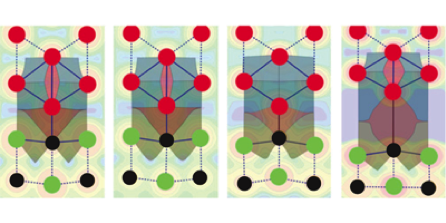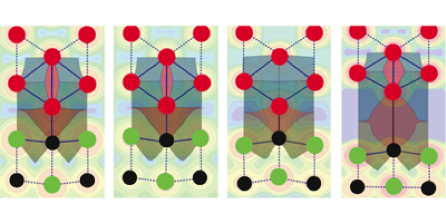Beyond Shake and Bake
For much of its history, materials science has relied on trial, error, and a well-stocked chemical cabinet to discover new substances and their properties, but growing computer power has lately boosted the role of computational methods in this pursuit. Researchers now use numerical tools ranging from first-principles calculations of atomic structure to simulations of metal collapse in a car crash. In a paper in Physical Review Letters, Travis Jones at the Colorado School of Mines, Golden, and colleagues report on their use of state-of-the-art quantum calculations and advanced visualization techniques to find new alloys that improve upon the mechanical properties of high-strength steel.
One of the more important quantities controlling a material’s mechanical properties is called the ideal work of separation, which is the minimum energy required to create two new surfaces from the bulk. Although difficult to measure in the lab, researchers have in the past computed this by means of density-functional theory. Jones et al. coupled computer visualization to a developing theory known as QTAIM (quantum theory of atoms in molecules) to bring more predictive power to the problem. With this approach they can characterize the distribution of charge density in a material and calculate the work of separation by analyzing how this distribution affects bond strengths and energies.
Using this method, the research team calculated the properties of steels strengthened with ceramic additives such as titanium carbide. Their observations point to a structure-property relation in which the number of electrons in second-nearest-neighbor iron bonds controls the work of separation, which they confirmed by looking at typical alloys for a range of conventional additives like nickel. This in turn should allow a priori design of recipes for stronger and tougher steel. – David Voss





